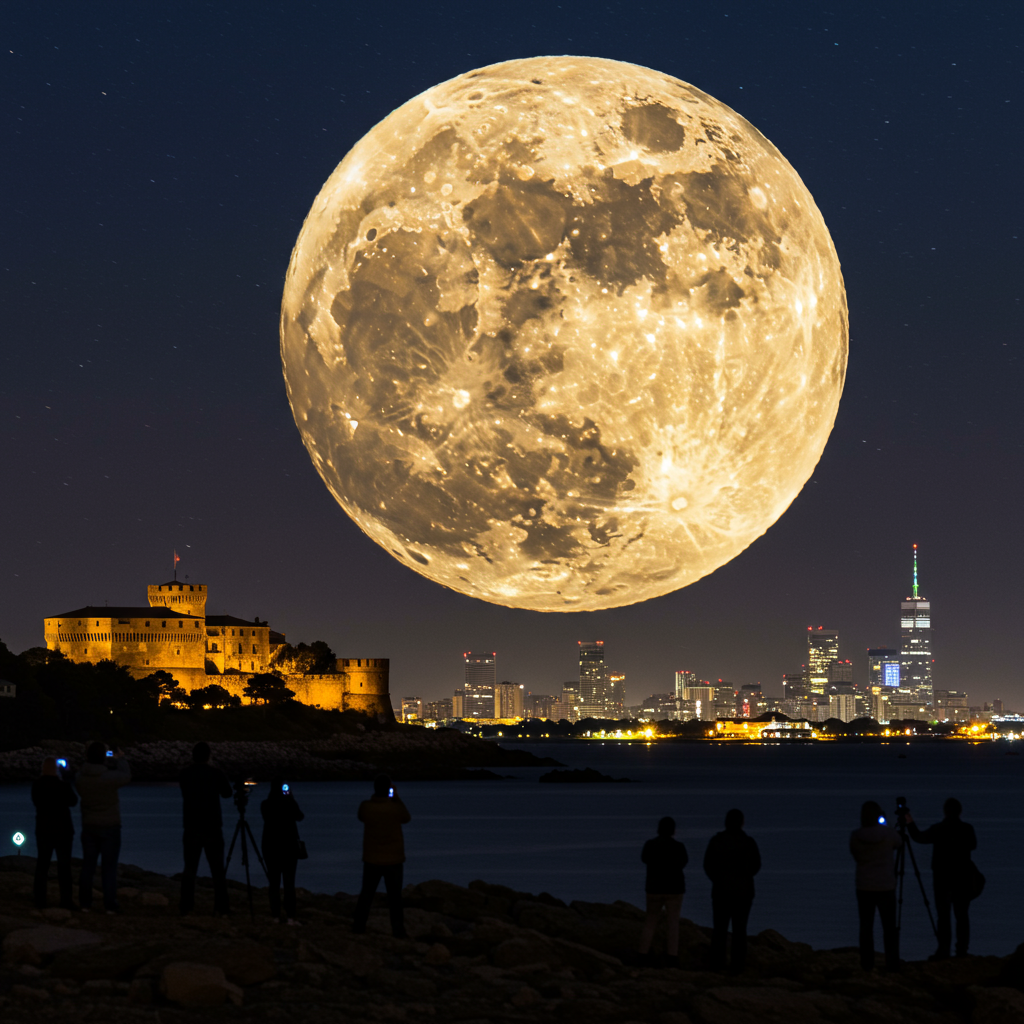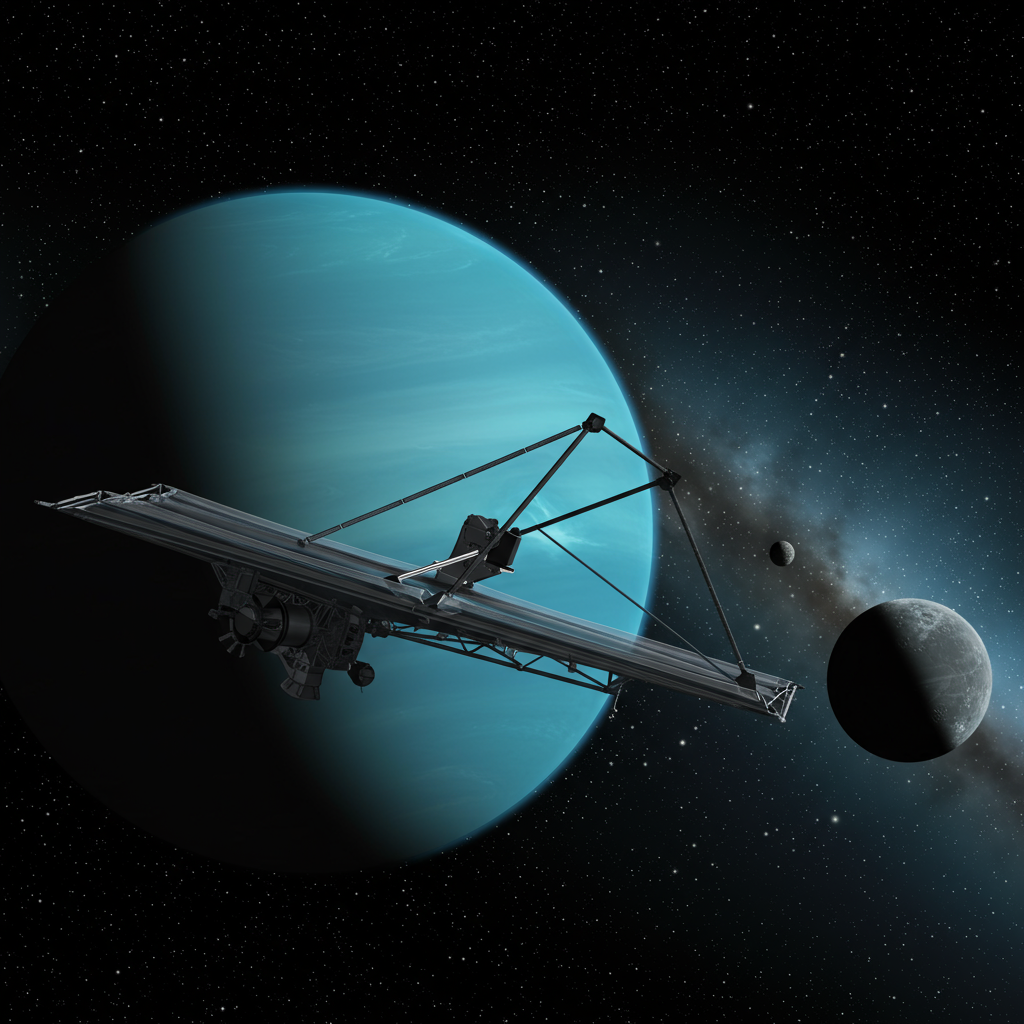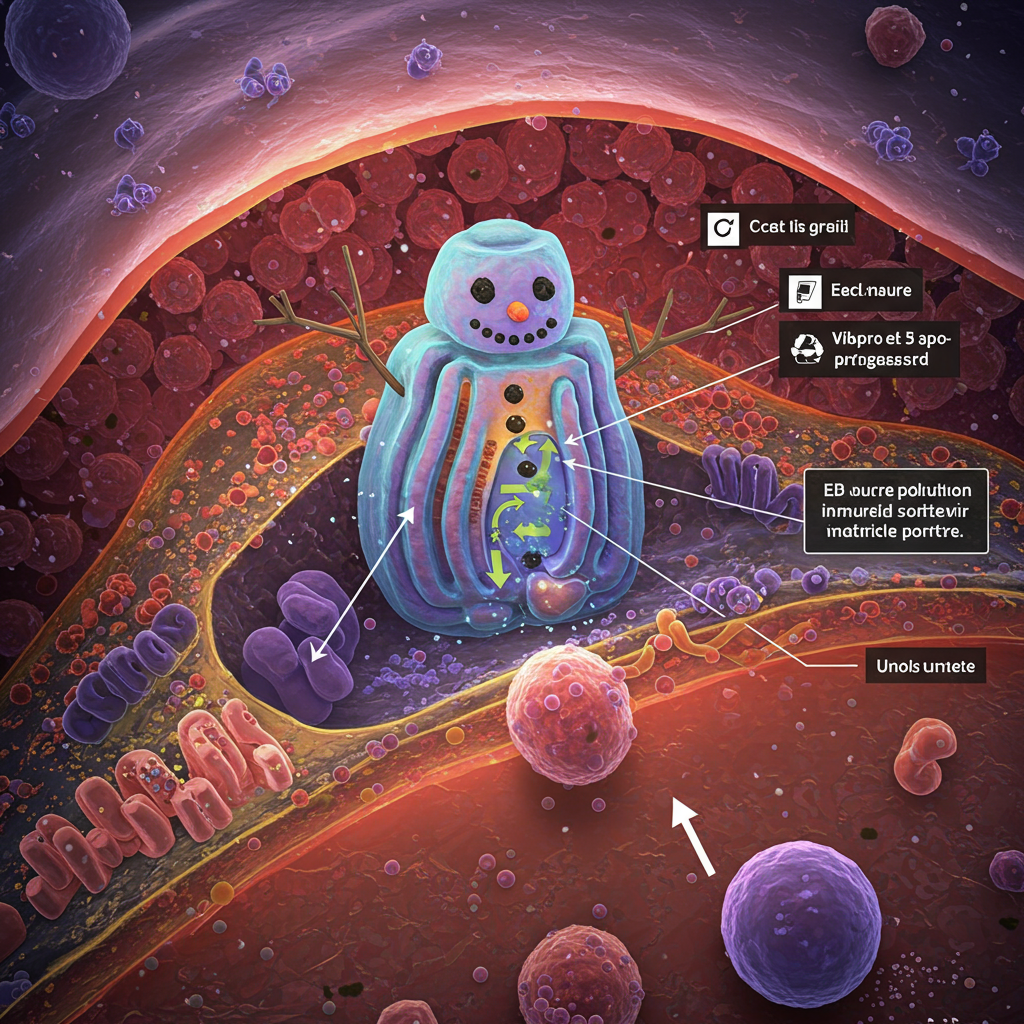The night sky delivered a spectacular show recently, as the rare Harvest Supermoon captivated observers across the globe. This celestial event, illuminating the evening of Monday, October 6, 2025, marked the first of three supermoons anticipated for the year. From New England’s coastal towns to ancient castles in Italy and city skylines worldwide, photographers and stargazers alike turned their eyes upwards to capture its magnificent glow. This article delves into the science and splendor of this special lunar display, offering unique insights and stunning visuals from around the world.
Decoding the Celestial Event: What is a Harvest Supermoon?
The term “Harvest Supermoon” combines two distinct astronomical phenomena, each contributing to its notable appearance. Understanding these components helps us appreciate the moon’s allure. The Harvest Moon is traditionally defined as the full moon occurring closest to the autumnal equinox, which fell on September 22. Historically, this moon was crucial for farmers. Its bright, extended light after sunset allowed them to work longer into the evening, bringing in vital summer crops before bad weather set in. This practical significance earned it its evocative name. Indigenous groups, like the Algonquins in the northeastern U.S., also recognized its importance, referring to it as the “Corn Moon” for its role in gathering essential staples.
The “Super” in Supermoon: Closer, Bigger, Brighter
The “supermoon” aspect means this full moon appeared noticeably larger and brighter than average. This occurs because the moon’s orbit around Earth isn’t a perfect circle; it’s an ellipse. As a result, its distance from our planet varies throughout the month. When a full moon phase closely coincides with perigee – the moon’s closest point to Earth – we observe a supermoon. During this particular event, the moon was approximately 224,599 miles (361,457 kilometers) away, roughly 10% closer than its average distance of 238,855 miles (384,400 km). NASA data suggests a supermoon can look up to 14 percent larger and a remarkable 30 percent brighter than a typical full moon. John Gianforte, director of the University of New Hampshire Observatory, affirmed that a larger apparent surface area naturally reflects more light, enhancing its brilliance.
The October 2025 Phenomenon: A Rare Alignment
While the Harvest Moon typically graces the September sky, its occurrence in October, as seen in 2025, is a relatively rare event. Data from Space.com indicates that an October Harvest Moon has happened only 18 times between 1970 and 2050, with the last instance in 2020 and the next projected for 2028. This infrequency adds to the special appeal of the 2025 display.
Prime Viewing: When and How to See It
The Harvest Supermoon reached its full phase on Monday, October 6, at approximately 11:47 p.m. EST, remaining visually prominent on the nights immediately before and after its peak. While the full moon occurred on Monday, its absolute closest approach to Earth was anticipated late on Wednesday, October 8. This timing coincided with another potential celestial treat: the annual Draconid meteor shower, offering skywatchers a chance to spot shooting stars. For optimal viewing, experts recommend finding a spot away from city lights with an unobstructed view of the horizon, especially during moonrise or moonset for a truly dramatic effect.
Beyond the Illusion: Explaining the Moon’s Appearance
Many observers noted the moon’s seemingly immense size when it hovered low on the horizon. This is often attributed to the moon illusion, an optical phenomenon where the moon appears larger when viewed near foreground objects like buildings or trees. It’s a trick of perception, not a change in the moon’s actual physical size. Additionally, the moon often exhibited a yellowish or orange tint when first rising. This striking coloration is due to Rayleigh Scattering. As moonlight passes through a greater portion of Earth’s dense atmosphere near the horizon, shorter, bluer wavelengths of light are scattered away, allowing longer, redder wavelengths to reach our eyes more directly. As the moon ascends higher, this yellow tint gradually fades.
A Global Spectacle: Iconic Harvest Supermoon Photos
The 2025 Harvest Supermoon was truly a global phenomenon, inspiring astrophotographers and casual observers to capture its majesty. Images poured in from every corner of the world, showcasing the moon against diverse backdrops.
Worldwide Perspectives: From Boston to Beijing
From the historic Scituate Lighthouse in New England to the bustling cities of Asia, the Harvest Supermoon provided countless breathtaking photo opportunities. Notable captures included:
Boston, Massachusetts: The full moon illuminating Pleasure Bay near Castle Island and rising above the former Hancock Tower.
Marshfield, Massachusetts: Couples taking in the scene under the moon at Rexhame Beach.
Washington D.C., USA: Austin DeSisto timed a perfect shot of the moon behind the Washington Monument.
New York City, USA: Veteran photographer Gary Hershorn captured stunning views above the Statue of Liberty and peeking around the EdgeNYC observation deck.
Hoboken, New Jersey: A close-up view riding over the Chrysler Building.
Singapore: A plane flying past the full moon.
Nablus, occupied West Bank: The moon setting behind Mount Eibal.
Moscow, Idaho: Rising above trees near Moscow Mountain.
Cairo, Egypt: Setting behind a mosque in El-Shorouk.
Nantucket, Massachusetts: Over Miacomet Golf Course.
Los Angeles, California: Rising over the city skyline.
Fort Worth, Texas: Before an NBA preseason game.
London, England: A bat flying over a lake in St James’s Park.
Italy: Lorenzo Di Cola photographed it above Rocca Calascio Castle and Santa Maria della Pietà church.
Tibet, China: Gongga Laisong documented the moon over Potala Palace.
Indonesia: Aditya Irawan photographed a plane in front of the moon over West Java, and Yasuyoshi Chiba showed it over the West Irian Liberation Monument in Jakarta.
Spain: Marcos del Mazo captured it rising over residential buildings in Madrid.
Nepal: Astrophotographer Amartya Mishra provided a spectacularly detailed shot over Kathmandu.
Daqing, China: Chi Shiyong captured the moon perfectly aligned with a bridge.
These diverse images underscore the universal appeal and visual impact of this striking celestial event, connecting cultures through a shared admiration for our lunar neighbor.
The Science Behind the Splendor: Orbital Mechanics & Atmospheric Effects
The moon’s intricate dance around Earth, combined with our planet’s atmosphere, creates the various phenomena we observe. While visually stunning, supermoons also exert subtle, measurable influences.
Understanding Perigee and Apogee
The moon’s elliptical orbit means its distance from Earth fluctuates significantly. Perigee is the closest point, averaging 356,355 kilometers (221,421 miles). Conversely, apogee is its furthest point, averaging 406,725 kilometers (252,720 miles). A supermoon is simply a full moon that occurs near perigee. This specific Harvest Supermoon on October 7, 2025, was approximately 359,818 kilometers (223,580 miles) from Earth, reinforcing its “super” status. Interestingly, when a full moon is at its closest, the full moons immediately preceding and succeeding it will also be significantly closer than average, often resulting in a series of supermoons. This isn’t a rare coincidence but a normal orbital pattern that creates a predictable, wave-like pattern of full moon distances.
The Golden Glow: Rayleigh Scattering Explained
The yellow or orange hue of the moon during moonrise, famously observed, is a fascinating atmospheric effect known as Rayleigh Scattering. Earth’s atmosphere is denser when looking towards the horizon. As moonlight travels through this thicker air, shorter, bluer wavelengths of light are more effectively scattered by atmospheric particles. This allows the longer, warmer wavelengths (yellow, orange, red) to pass through more directly to our eyes, giving the moon its distinctive warm glow. As the moon rises higher, the light travels through less atmosphere, and more of the blue light reaches us, making the moon appear whiter.
Supermoons also subtly influence Earth’s oceans. The moon’s closer proximity enhances its gravitational pull, leading to higher-than-average tides known as perigean spring tides, often colloquially called “king tides.” It’s important to note, however, that scientific consensus dismisses age-old theories linking supermoons to major geological events like earthquakes or tsunamis, or even human physiological cycles.
Beyond 2025: Upcoming Supermoons and Lunar Events
The Harvest Supermoon was just the beginning of a remarkable celestial season. Skygazers have more to look forward to in the near future.
What’s Next for Skygazers?
Following October’s display, 2025 will feature two more supermoons:
November 5, 2025: The “Beaver Moon,” which will be the closest supermoon of this series, at a distance of 356,818 kilometers. This full moon traditionally marked the time when beavers were actively building their dams.
- December 4, 2025: The “Cold Moon.”
- www.livescience.com
- www.bostonglobe.com
- www.space.com
- www.abc.net.au
- www.bbc.com
While the January 3, 2026, full moon might be considered a supermoon by some definitions, it occurs two days after its closest approach to Earth. The next unequivocal super full moon after this series isn’t expected until November 25, 2026. Beyond supermoons, other noteworthy astronomical events for enthusiastic skywatchers include a total lunar eclipse in early March and the magnificent Geminids meteor shower in December, often considered one of the best meteor showers of the year.
Frequently Asked Questions
What made the October 2025 Harvest Supermoon a particularly rare event?
The Harvest Supermoon of October 2025 was rare because an October Harvest Moon itself is infrequent, occurring only 18 times between 1970 and 2050. The last one was in 2020, with the next projected for 2028. This rarity was amplified by its “supermoon” status, meaning the moon was near its perigee (closest point to Earth), making it appear notably larger and brighter. Combining these two elements created a special and memorable celestial display.
Where were some of the most stunning Harvest Supermoon photos captured globally?
Photographers worldwide captured breathtaking images of the Harvest Supermoon. Iconic locations included the historic Scituate Lighthouse and Boston’s skyline in New England, the Washington Monument and Statue of Liberty in the U.S., and international landmarks such as Rocca Calascio Castle in Italy, Potala Palace in Tibet, the West Irian Liberation Monument in Jakarta, and the Chrysler Building in New York City. Images also came from Singapore, Moscow (Idaho), Cairo (Egypt), London, and many other diverse settings, showcasing its universal appeal.
How significant is the visual difference of a supermoon compared to a regular full moon, and is special viewing equipment necessary?
While a supermoon can be up to 14% larger and 30% brighter than a “micro-moon” (a full moon at apogee), the visual difference to the naked eye is often subtle. Human eyes are not sensitive enough to easily perceive such variations without a direct comparison. No special viewing equipment is necessary to enjoy a supermoon; it’s a beautiful sight on its own. However, binoculars or a small telescope can enhance the experience, allowing you to observe intricate lunar details, craters, and maria more clearly.
Conclusion: The Enduring Allure of Our Lunar Companion
The 2025 Harvest Supermoon was more than just an astronomical event; it was a global spectacle that united observers under a shared sky. Its unique combination of historical significance, scientific phenomena, and visual splendor reminded us of the profound connection between humanity and the cosmos. As we anticipate future lunar events, the enduring magic of our celestial neighbor continues to inspire wonder, reminding us of the vast, intricate beauty that orbits just beyond our reach. Keep looking up – the universe always has more to show.




